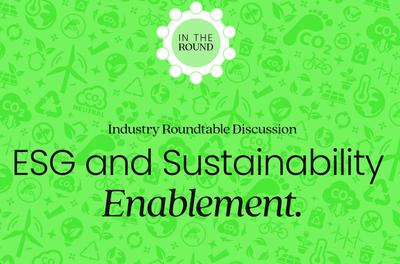Connecting learning initiatives to measurable business outcomes remains a critical challenge for L&D professionals.
While many organisations focus on learning outputs – courses completed, platforms launched, attendance rates tracked – the key to driving real impact lies in asking better strategic questions from the start. This blog is a distillation of our recent webinar, exploring how asking the right questions can transform training initiatives from routine programs into powerful drivers of business success.
Learning strategy's missing link.
Whether you lack the skills, time, or buy-in to make truly strategic learning impact, you’re not alone. While aligning learning with business objectives remains a key priority for L&D teams, many organisations still default to measuring outputs like completion rates rather than asking the fundamental questions that get to the core of the business challenge at hand. This solution-first mindset creates well-executed programmes that are disconnected from business impact.
Research shows that organisations that excel at connecting learning to business priorities significantly outperform their peers across key metrics - from profitability and talent retention to adoption of emerging tech. So - how do you get there?
Why strategic questions drive learning impact.
The path to demonstrating learning impact requires a fundamental shift in approach. Rather than beginning with solution design, successful learning strategies start with crafting a "compelling question" - one that frames the business challenge in a way that drives meaningful action and stakeholder buy-in.
This approach acknowledges a harsh reality: training alone rarely solves complex business challenges. By reframing how we approach these challenges from the outset, we can create space for more comprehensive, impactful solutions that genuinely serve business needs.

Five elements of high-impact learning strategy.
1. Reframe the challenge beyond knowledge gaps.
Many learning initiatives fail because they reduce complex business challenges to knowledge gaps. This oversimplification ignores the multifaceted nature of organisational challenges, where behaviour change, environmental factors, and systemic issues often play crucial roles.
Traditional approach: "Our sales team needs product knowledge training."
Strategic reframe: "How can we enable our sales team to consistently deliver value in customer conversations?"
2. Embrace the power of "How".
Questions that begin with "how" create space for strategic thinking and collaborative problem-solving. They resist the temptation to jump to predetermined solutions and instead open up discussions about comprehensive approaches to business challenges.
This shift in questioning technique also helps avoid the "training first" trap - the tendency to view every business challenge through the lens of learning delivery.
3. Align with business imperatives.
A compelling question must explicitly connect to business metrics or strategic vision. This connection is crucial for two reasons:
- It ensures learning initiatives directly contribute to organisational priorities.
- It creates a clear path to securing budget and stakeholder support.
Remember: where you find business priorities, you find budget allocation. This alignment isn't just about metrics - it's about speaking the language of business impact.
4. Move beyond learning language.
The deliberate exclusion of learning and training terminology from your strategic question forces a broader perspective on potential solutions. This approach:
- Encourages thinking beyond traditional learning interventions.
- Facilitates better stakeholder engagement.
- Creates space for innovative, multi-modal solutions.
5. Talk to the elephant!
Jonathan Haidt coined the concept of the elephant (our emotional side) and rider (our analytic, rational side) to describe the elements in play during decision making. The rider thinks they’re in control of the elephant, but, typically, it’s the elephant that holds the wheel. Too often, learning teams try to bypass the elephant entirely – both in the creation of learning experiences and how they talk to the business - and speak in unemotive, rational language.
Your strategic question needs to resonate on both levels to drive genuine organisational buy-in and support. That’s the compelling part of the compelling question – does it connect with people at an emotional level as well as a practical one?
If you want to learn more about how to speak to your learner's 'emotional elephant' check out our podcast episode with Julie Dirksen, author of "Talk to the Elephant".

Implementing strategic learning: The 3E Framework.
Once you've crafted your compelling question, the 3E framework provides a structure for developing comprehensive solutions:
- Experiences: What interactions will drive behaviour change?
- Environments: What context and systems need to be in place?
- Evidence: What data points will demonstrate impact?
This framework ensures that solutions address the full scope of the business challenge, not just the learning component.
Create learning experiences that connect to your org.
Consider this transformation of a real-world example:
Traditional request: "We need to design content to create an empowered organisation with sustainability knowledge."
Strategic question: "How do we make our sustainability mission actionable and measurable across the business to meet our 2030 targets?"
The revised version:
- Connects directly to business objectives.
- Creates space for multiple solution approaches.
- Enables clear impact measurement.
- Drives stakeholder engagement and buy in.
Creating a learning strategy
for the long term.
Developing strategic learning initiatives that drive genuine business impact starts with asking the right questions. This approach requires:
- Resisting the urge to jump to solution mode.
- Investing time in understanding true business challenges.
- Engaging stakeholders in question development.
- Creating space for innovative, comprehensive solutions.
Remember, the goal isn't perfection but progress. Each improvement in how we frame learning challenges brings you closer to demonstrating meaningful business impact.

Download: Create a learning strategy that drives business impact.
This infographic breaks down the compelling question method to help you connect important learning decisions deeply to broader business strategy.

Let’s make this
happen.
You know you need to move beyond output-focused learning to drive real business impact. But knowing is only a small part of making actual change.
Maybe you have the vision but need the skills to get there. Perhaps you have the expertise but lack the time. Or you might need an ally to help secure organisational buy-in and make learning a priority.
Whatever challenge you’re facing, let’s tackle it together. Whether you need a strategic thinking partner, additional capacity, or help building a compelling case, start by having a conversation with us. One question can be the catalyst for transforming your learning strategy into a genuine driver of business success.
Ready to take that first step? Let’s talk.

Ready to learn more?
Catch up on our previous webinars.

In the Sponge ESG and Sustainability Roundtable, experts from global organisations share their insights into the role L&D plays in enabling lasting and impactful change at large multi-nationals.

Catch up on our Sponge Essentials session, "5½ Rules for Transforming Your Compliance Training Strategy", hosted by Sponge's Chief Creative & Learning Officer, Josh Cardoz.

Catch up on our webinar, 'The L&D tightrope: how to balance business goals with today’s employee needs', for an exploration of how L&D can transform the people-performance paradox into a powerful catalyst for organisational growth and employee fulfilment.

Catch up on our webinar, 'Thinking and working differently to create strategic momentum – how L&D becomes a strategic partner', for an exploration of how L&D can transform from cost-centre to strategic powerhouse.
